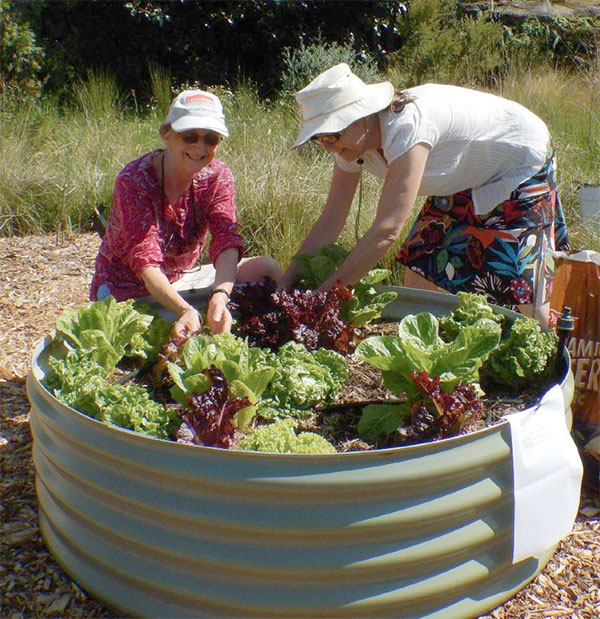
Botanical name:
Lactuca sativa
Description:
Lettuce plants and their ancestors are native to Europe and Northern Asia. They are usually grown for their colourful green and red leaves that grow 15 to 30 cm high.
They have been cultivated to a variety of colours, textures (soft and tender to crisp and crunchy) and shapes (dense heads like iceberg, loose leafy varieties and medium dense ones like Romaine or cos).
Lettuce grows best in cool weather, heat and dry-stress leads to bolting: the plants grow up to 1 meter high and go to flower. This renders the leaves more bitter and less tender, less pleasant to eat.
If a lettuce stem is broken it exudes a milky sap.
How to grow:
Sow lettuce seeds in seedbeds of seed raising mix about 3 mm deep and keep moist. Single out when plants show 6 leaves. Fertilise once per week with liquid fertiliser.
Plant into moisture retentive soil with some dug in compost, 10 cm apart in rows 15 cm apart.
Doesn’t need fertilising.
Keep well watered.
Growing in the neighbourhood:
Companions are carrots, onions, brassicas, marigold and borage. Doesn’t like to live with parsley in the same bed.
Pests and other problems and how we deal with them:
Slugs and caterpillars love lettuce seeds. We use coffee grounds against slugs and Dipel spray if serious caterpillar damage occurs. Once lettuce is established and the temperatures are favourable, keeping the plants healthy by applying worm juice as a tonic usually helps them to stay healthy. Dry stress makes the plants weak and they can be attacked by aphids. Avoiding this and taking out affected plants and using them is the best way to deal with this problem, because the usual treatment, sprays with both soap and oil is detrimental to the tender leaves as well.
Season:
Lettuce is a cool climate crop. It grows best at temperatures between 15 and 18 degrees, lower temperatures are still tolerated, temperatures above 24 degrees lead to rapid bolting. Late Autumn to early Winter or from Late Winter to late Spring is the best time.
Seed-saving:
Lettuce cross pollinates between the cultivars, plants would need to be kept singled out to gain true seeds.
How to harvest and use:
The best way to harvest lettuce is to pick the outer leaves. The plant re-grows more leaves very quickly, for an ongoing harvest. Refresh the leaves at home by putting them in a sink of cold water for half an hour, they will turn crisp and snappy again. Washed and dried they keep in a bag in the fridge for several days to enjoy.
Lettuce is usually eaten raw as part of a salad and are added to sandwiches.